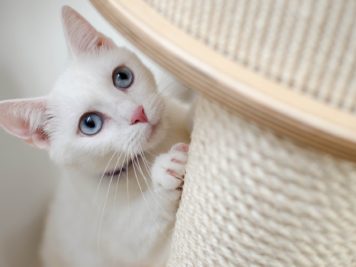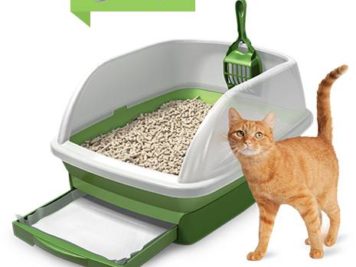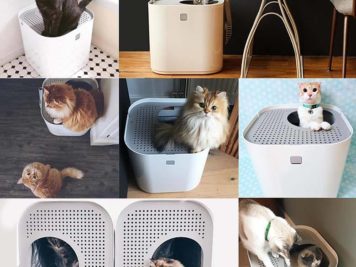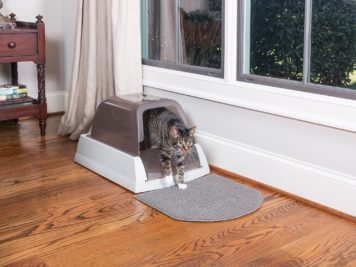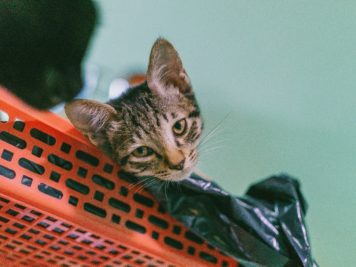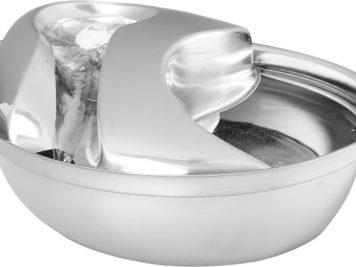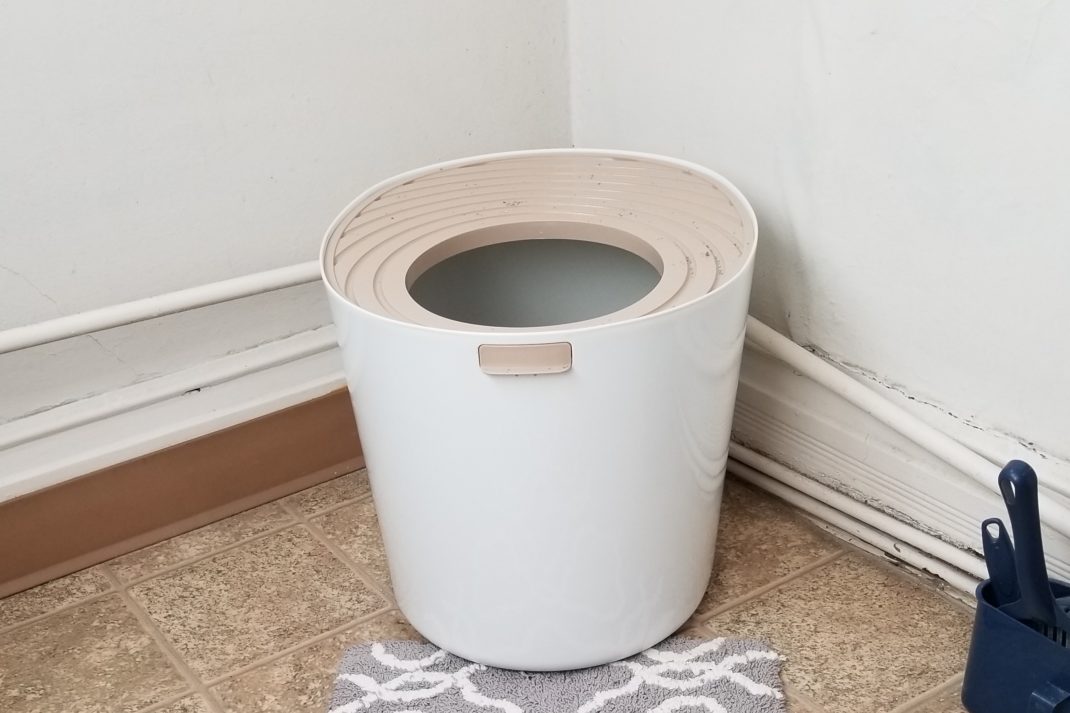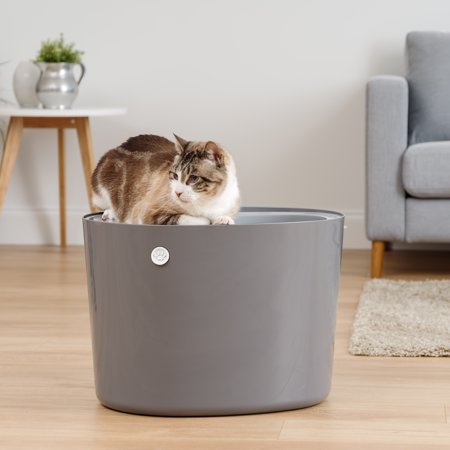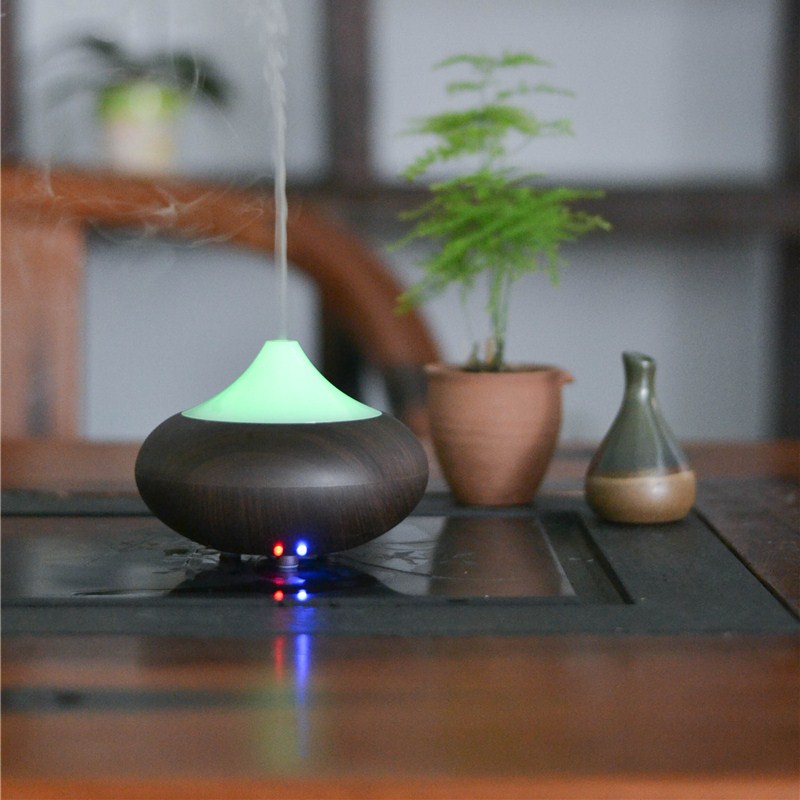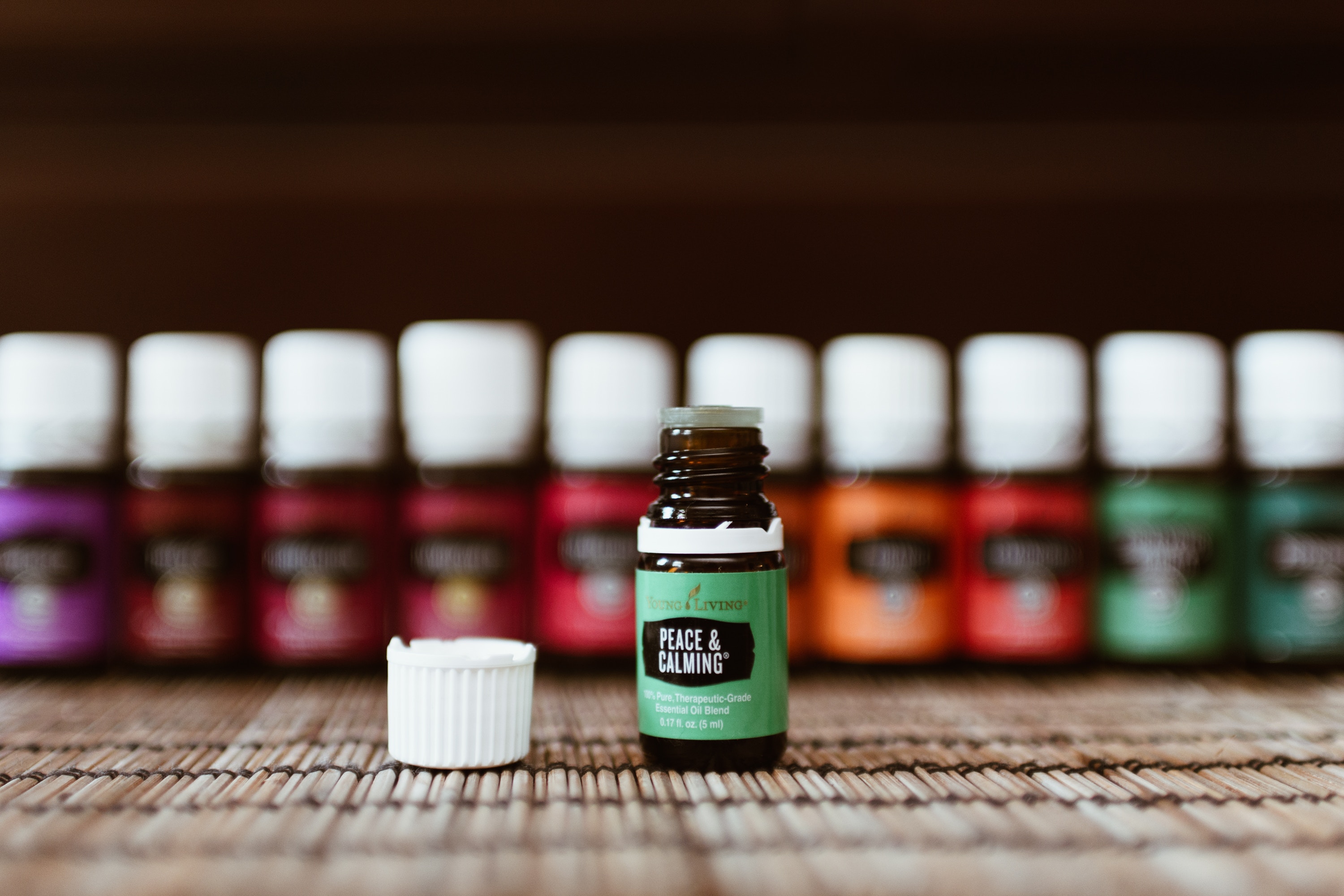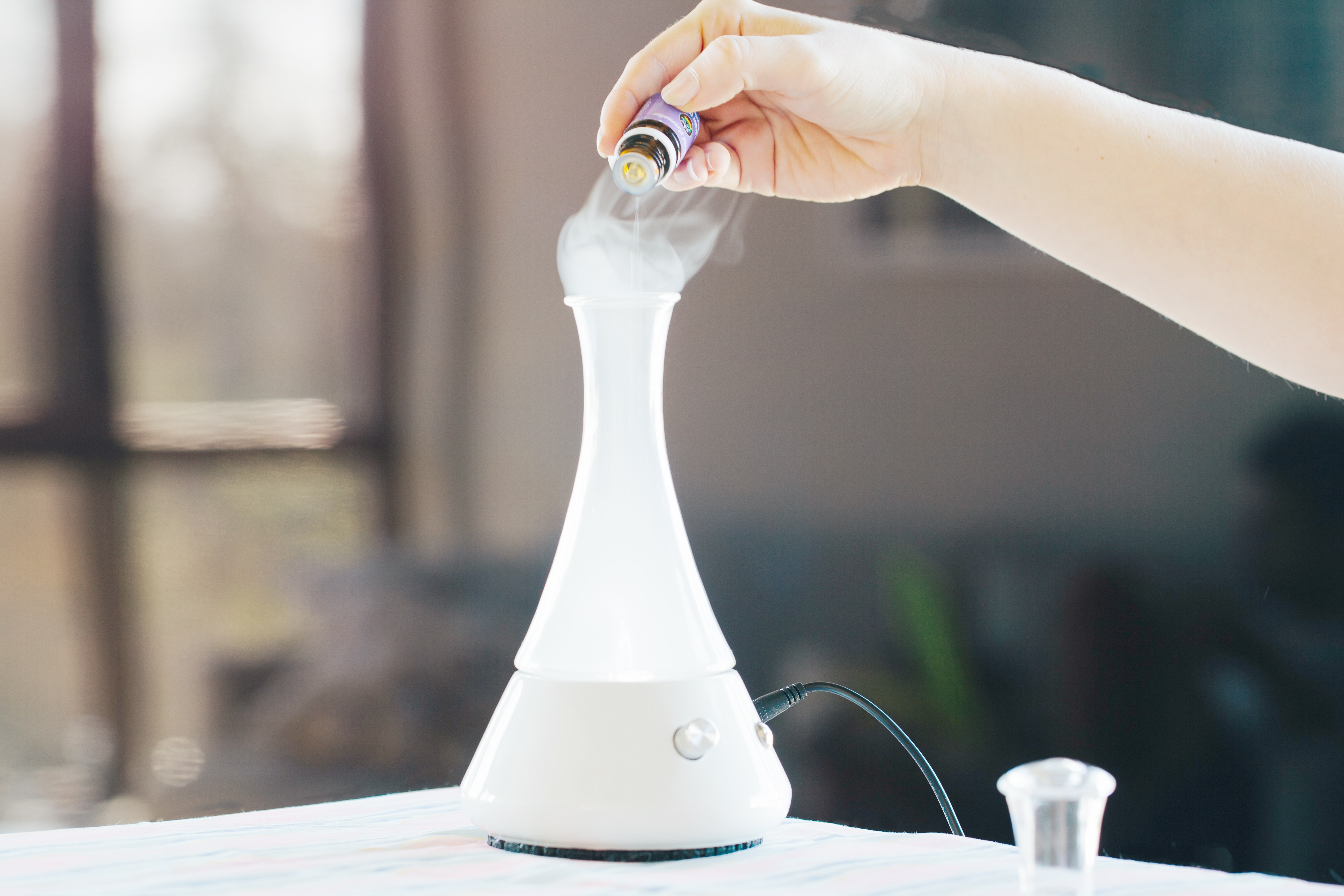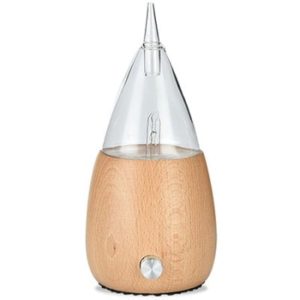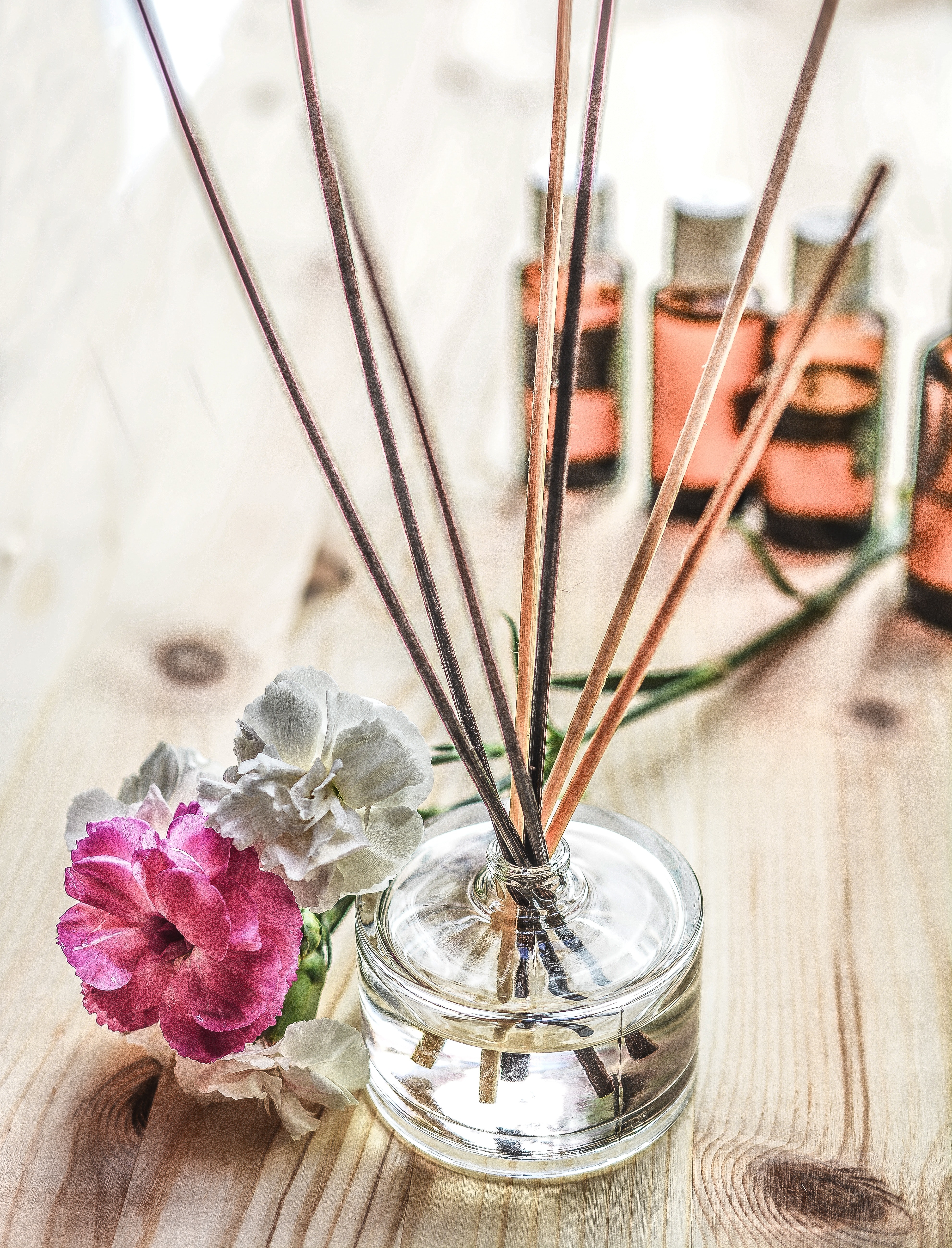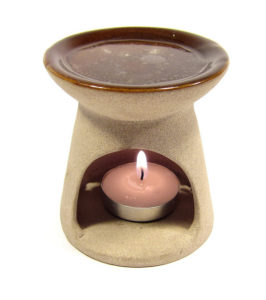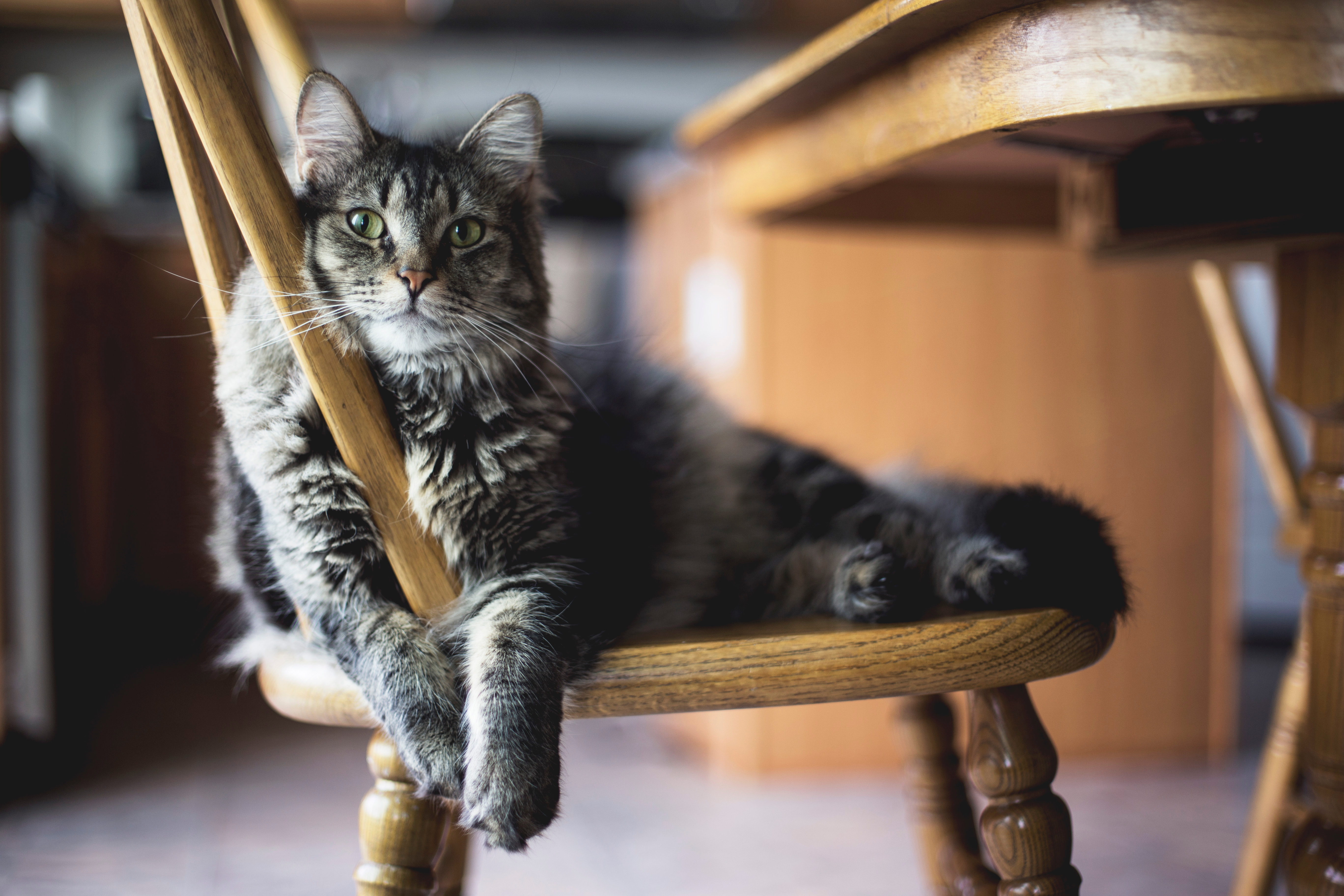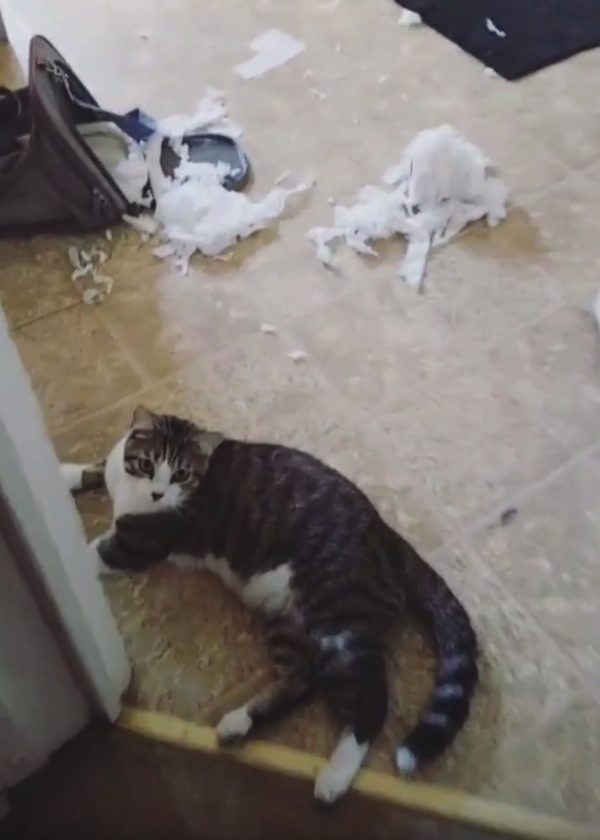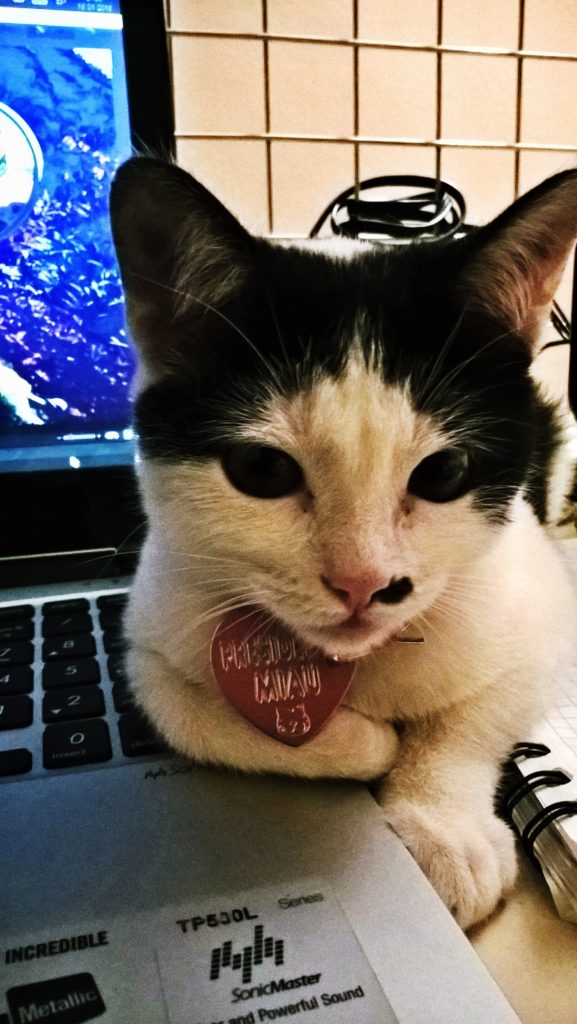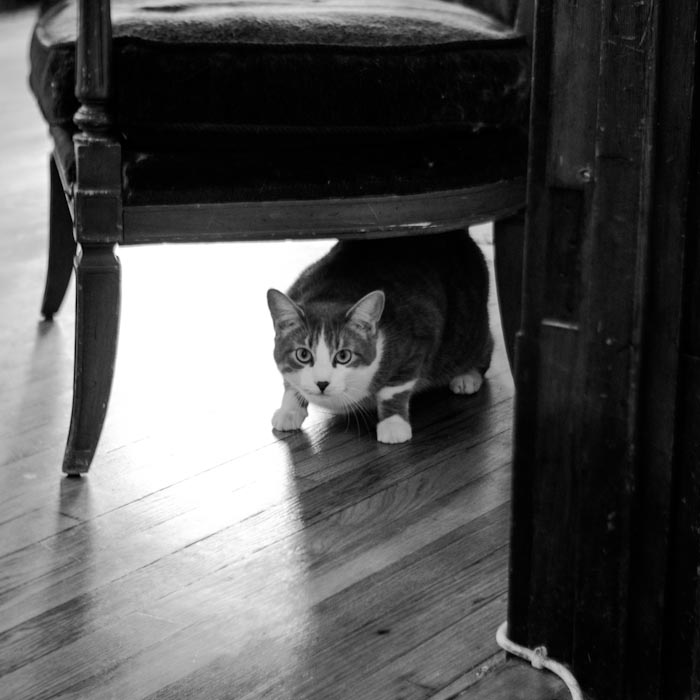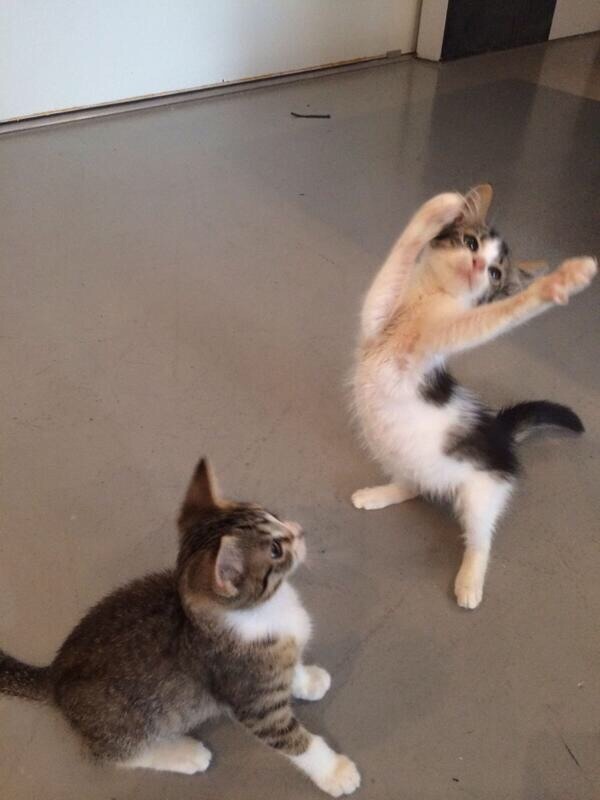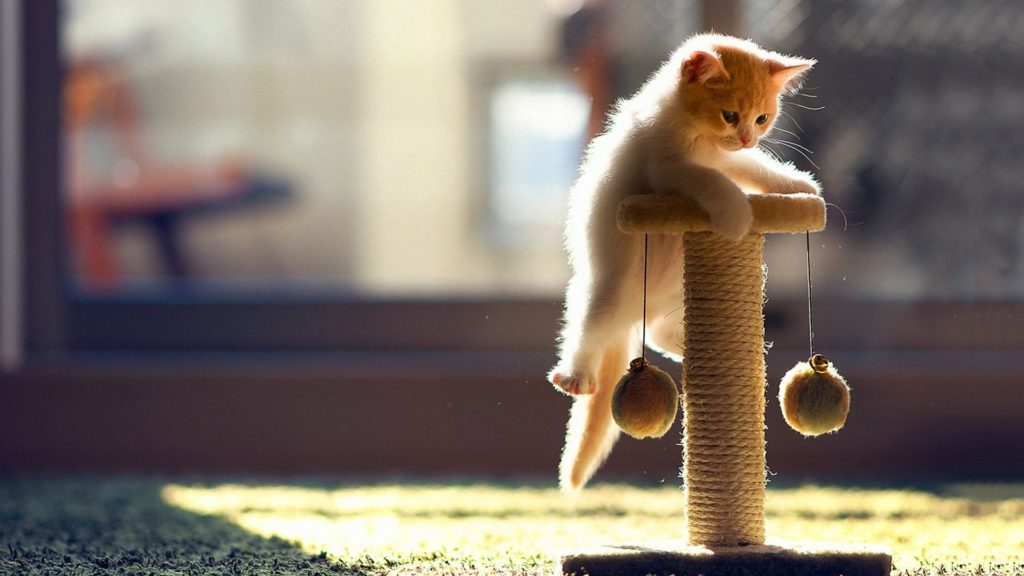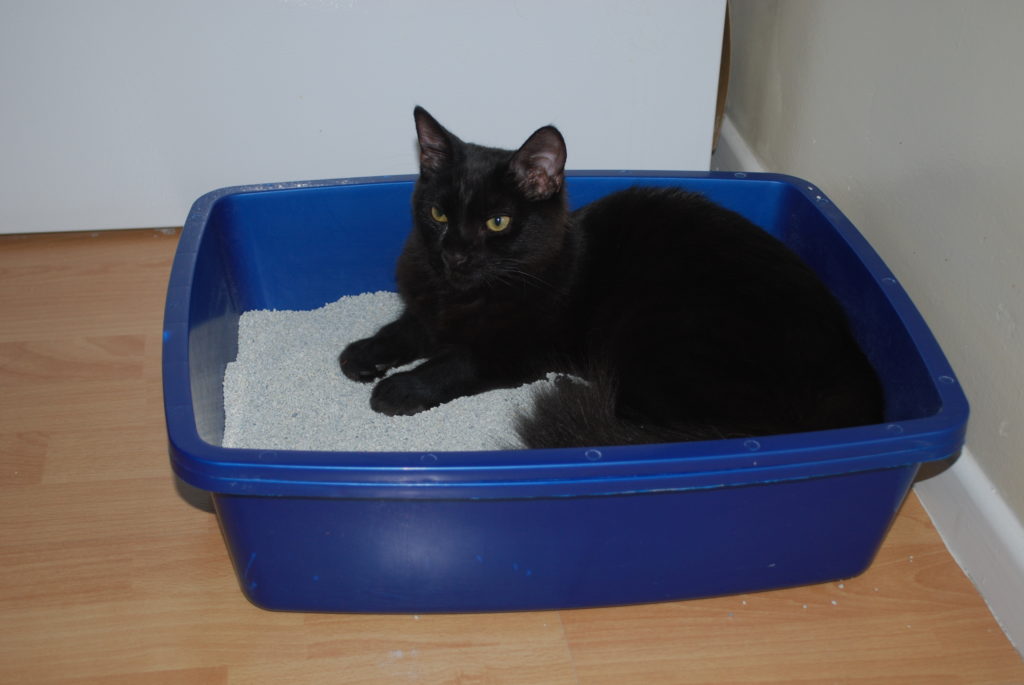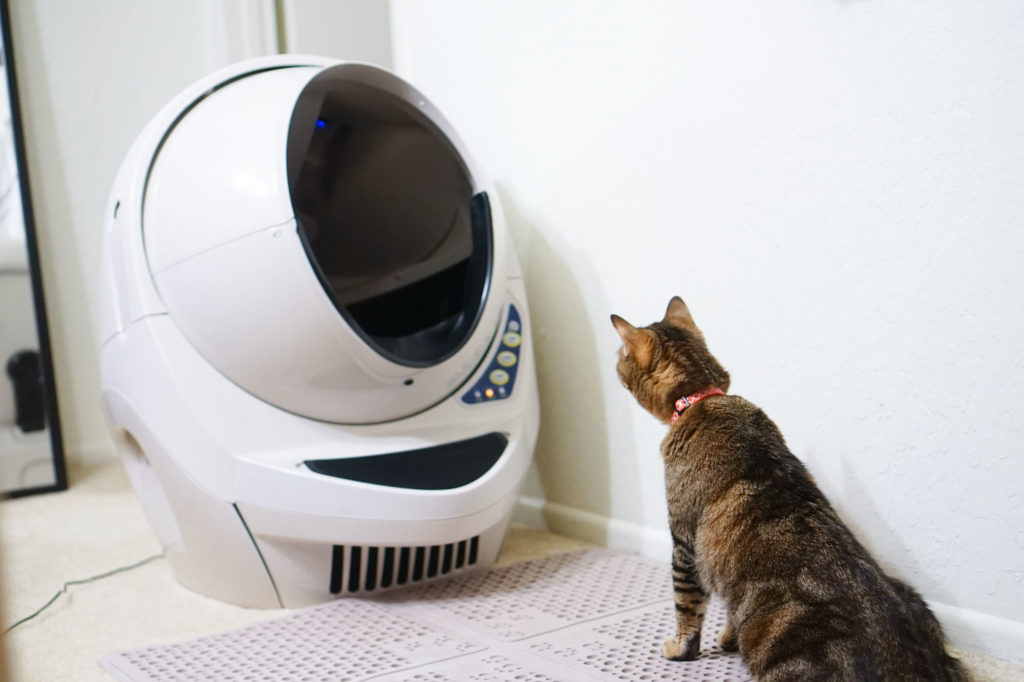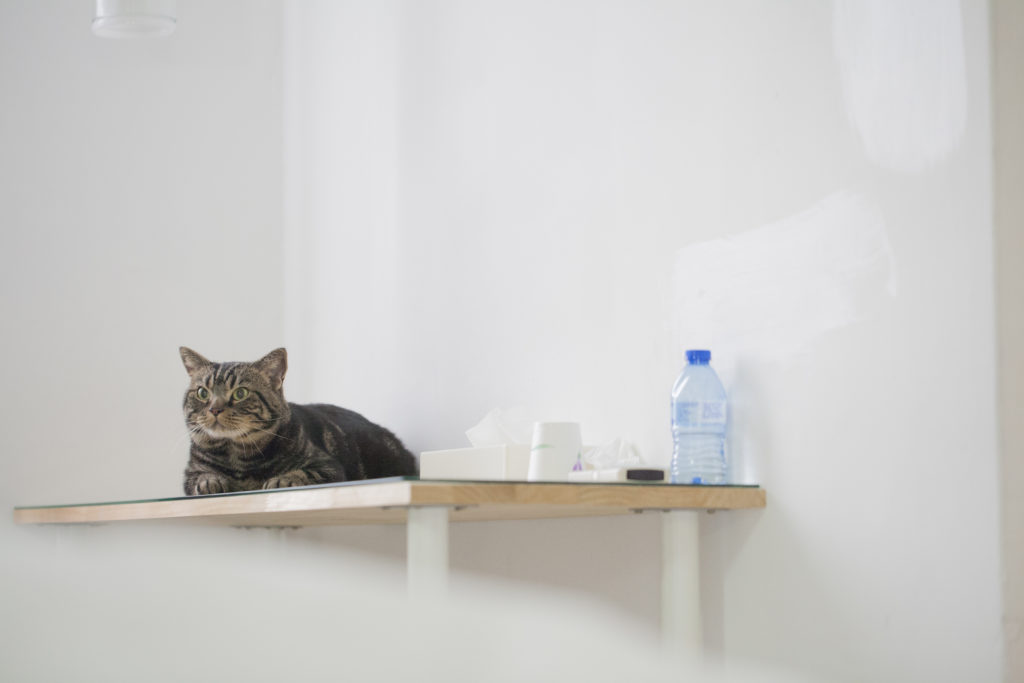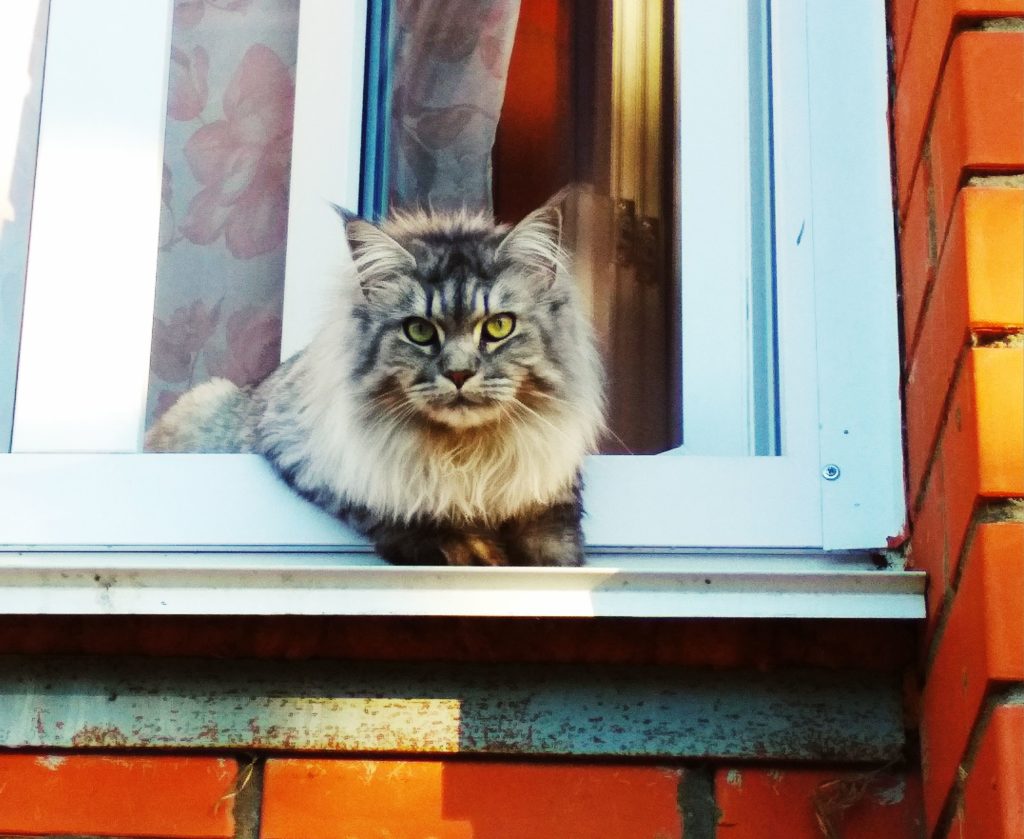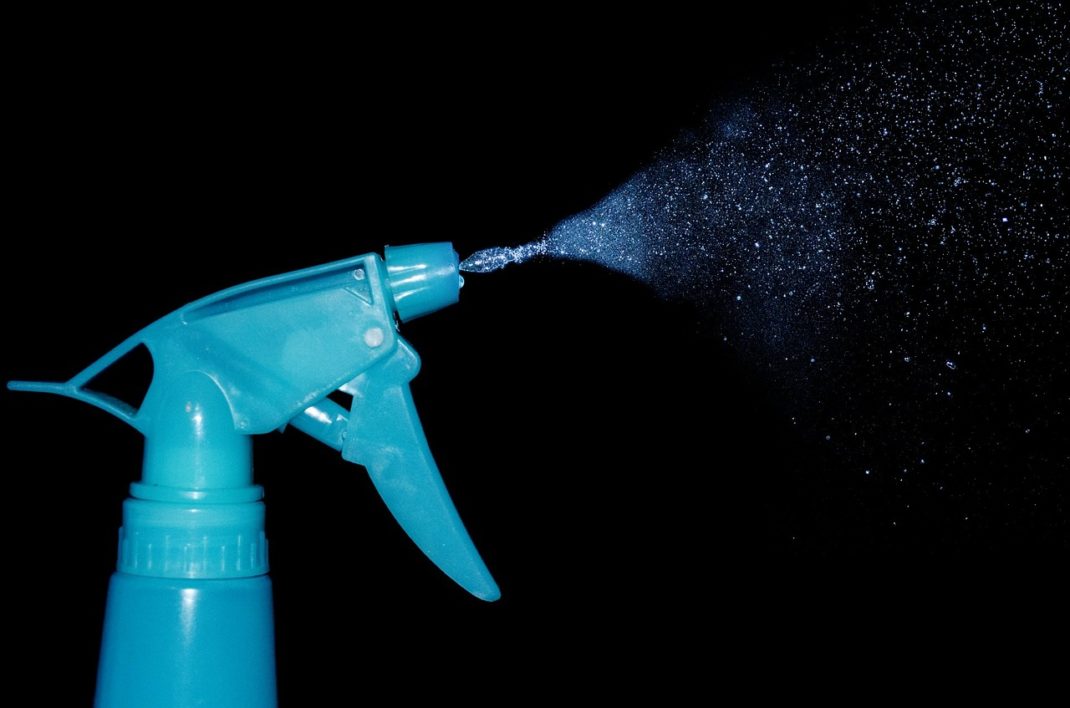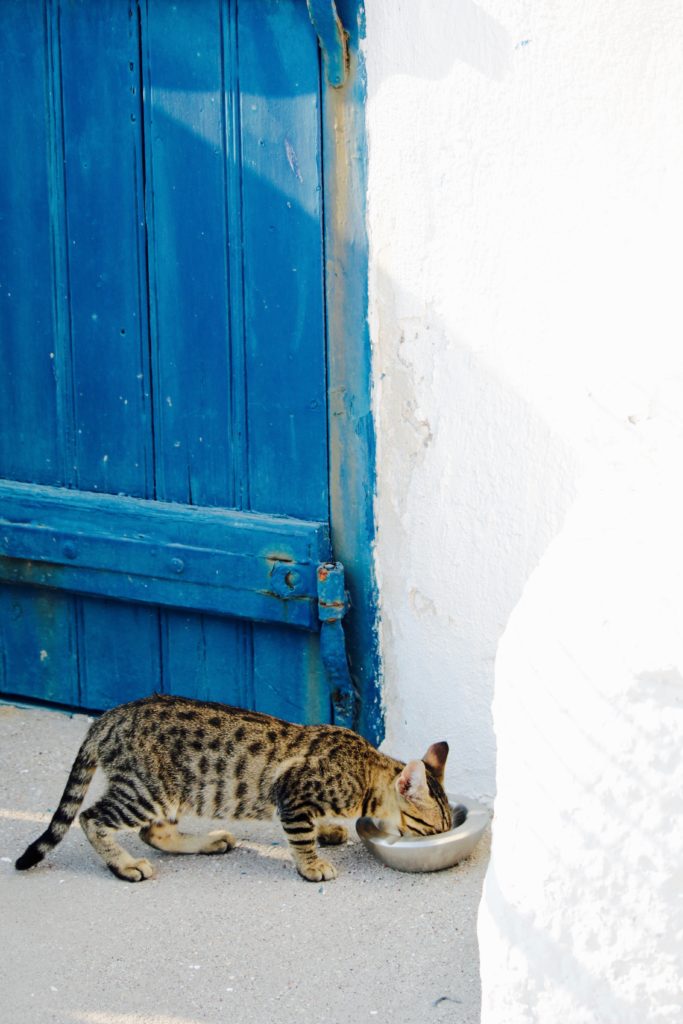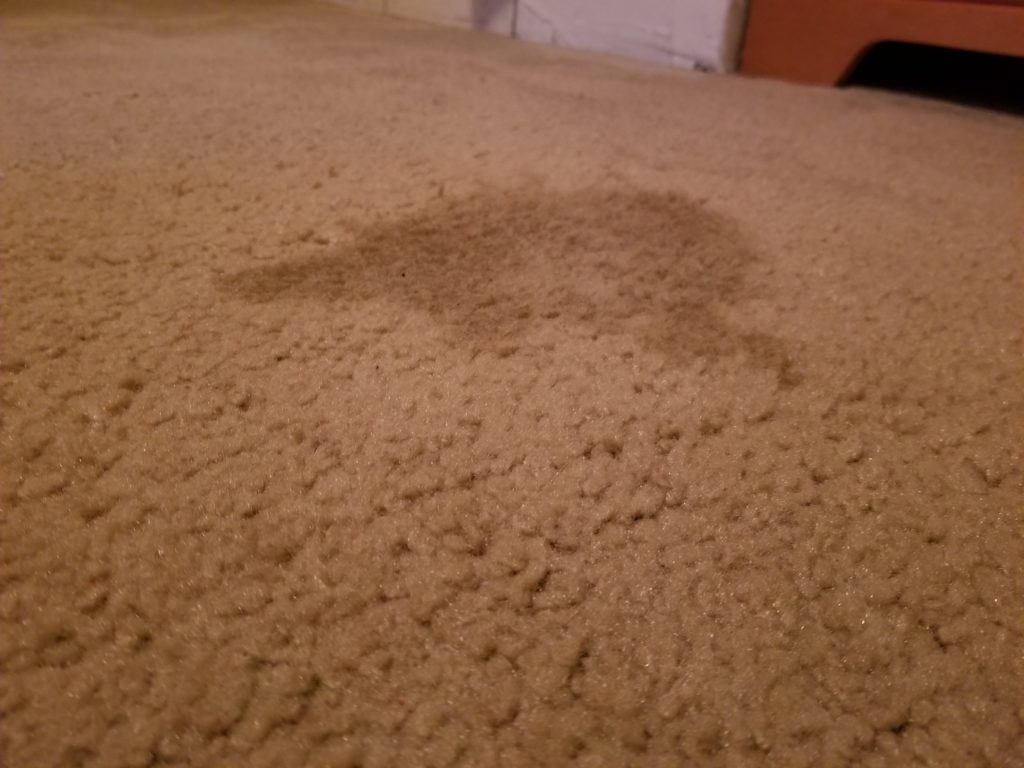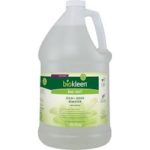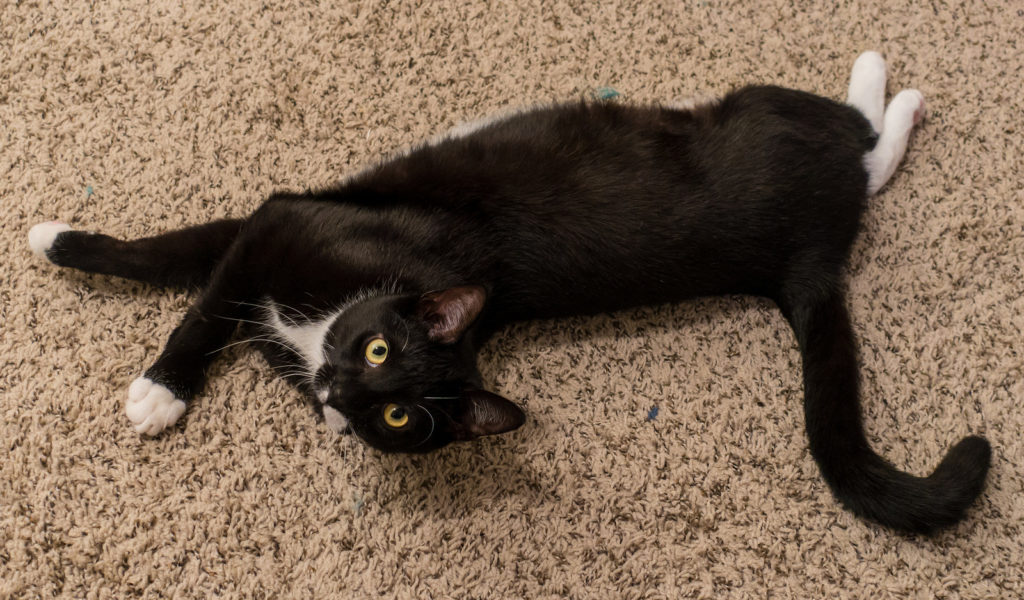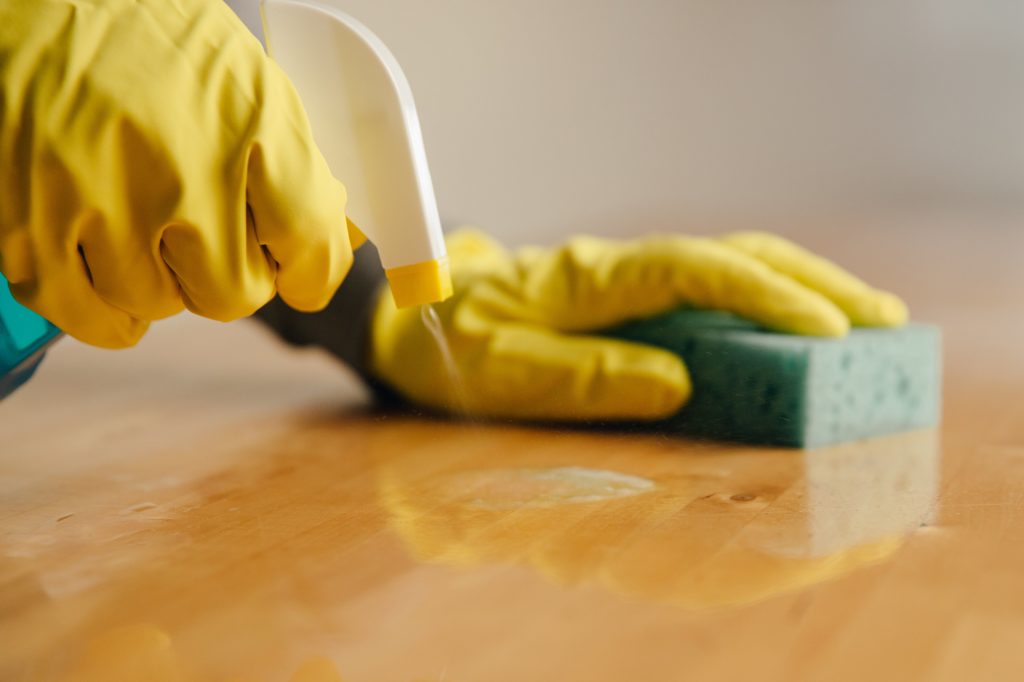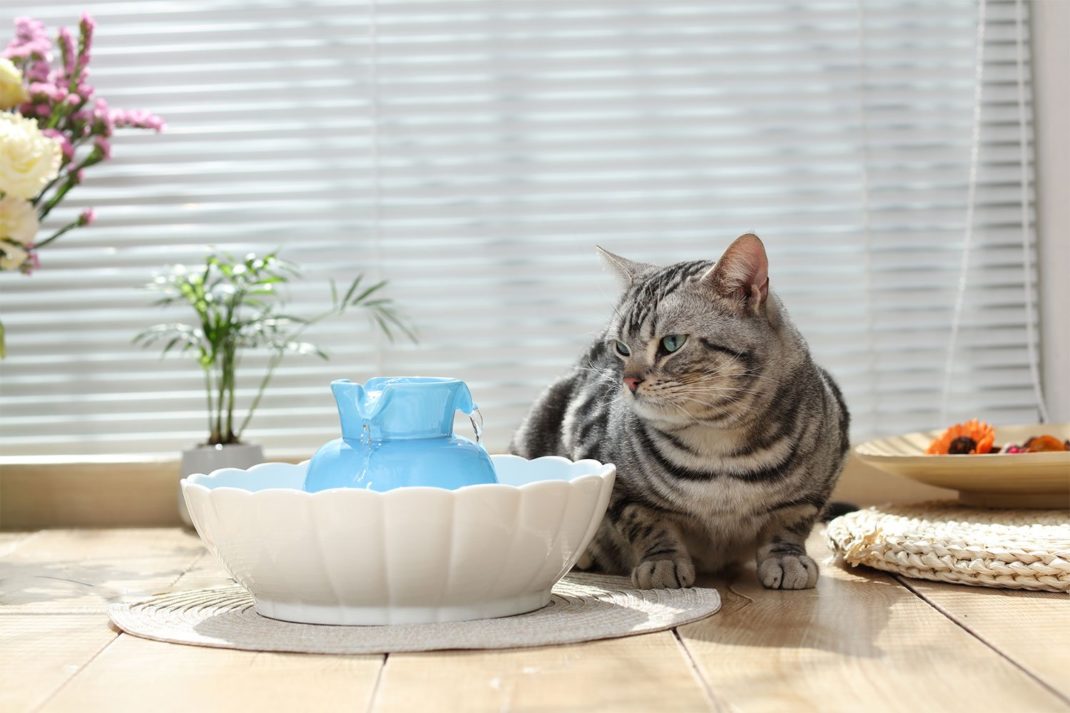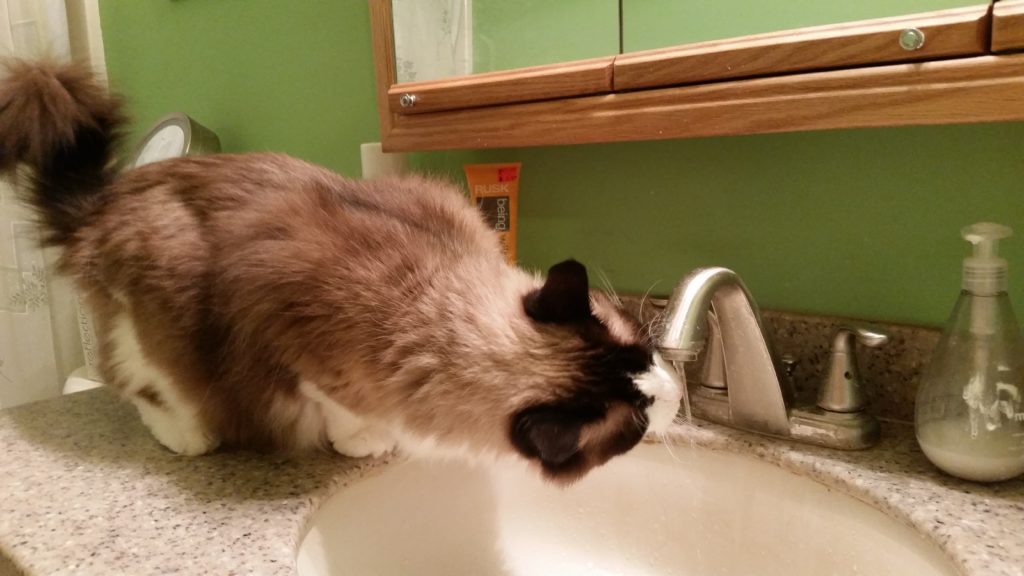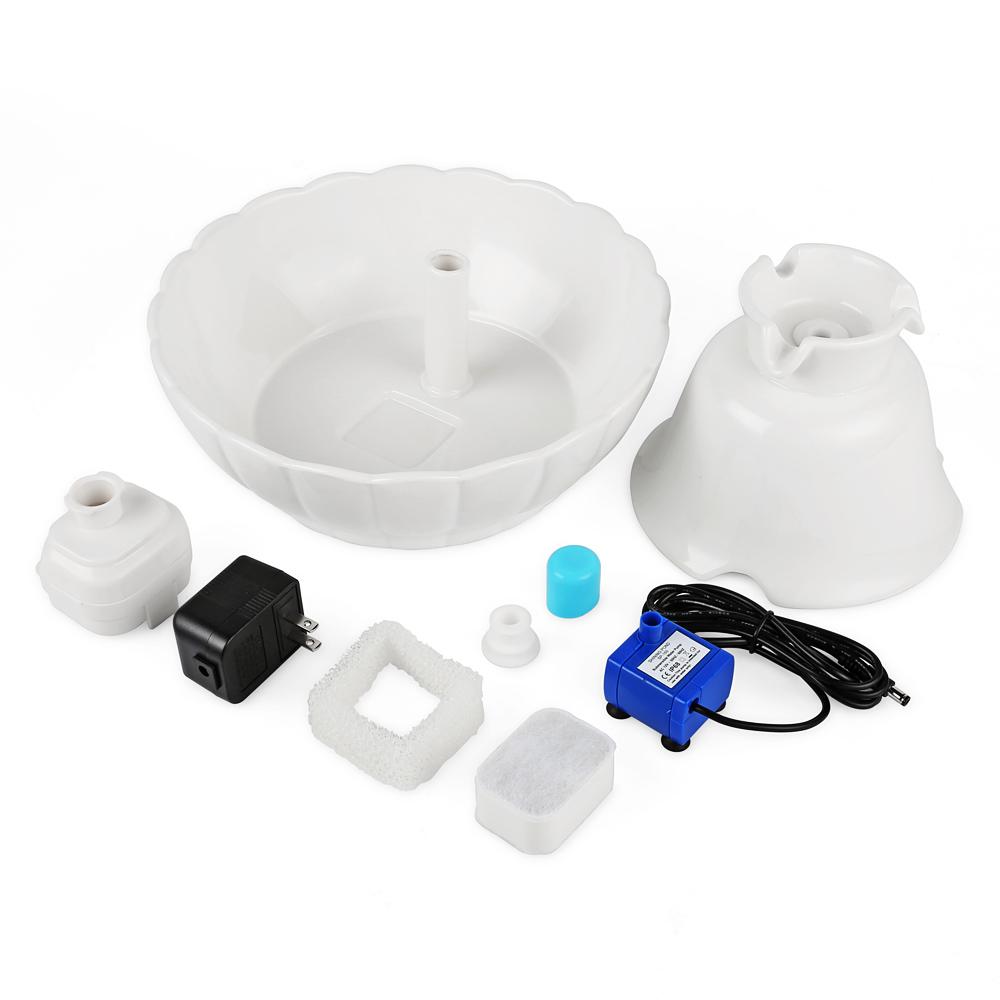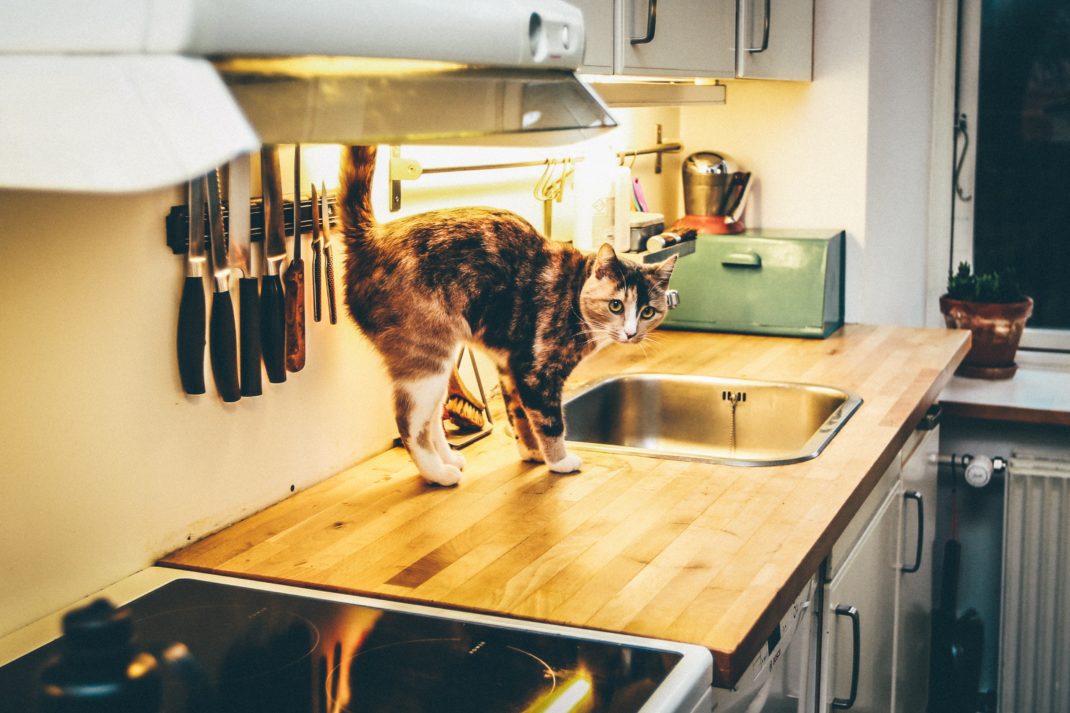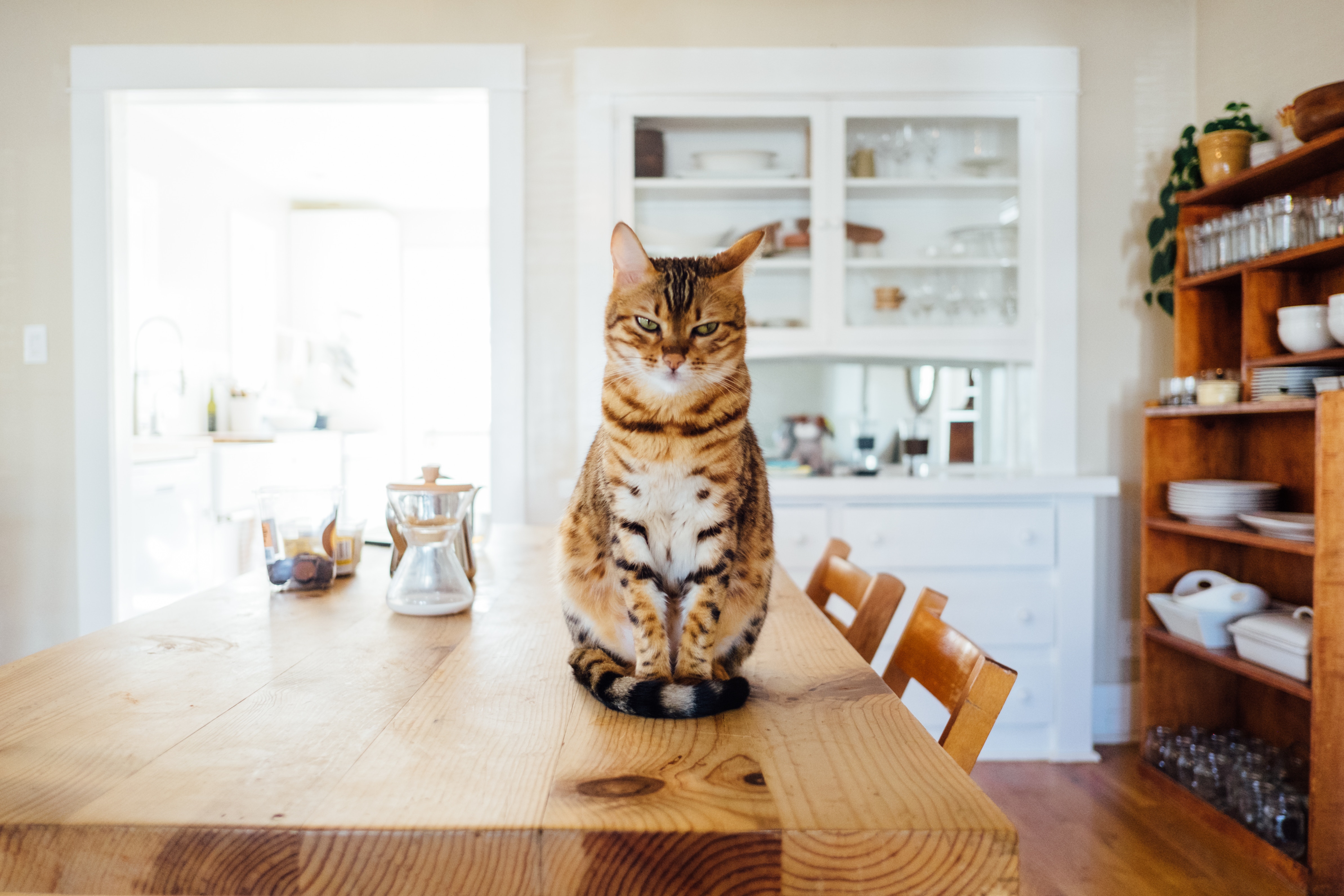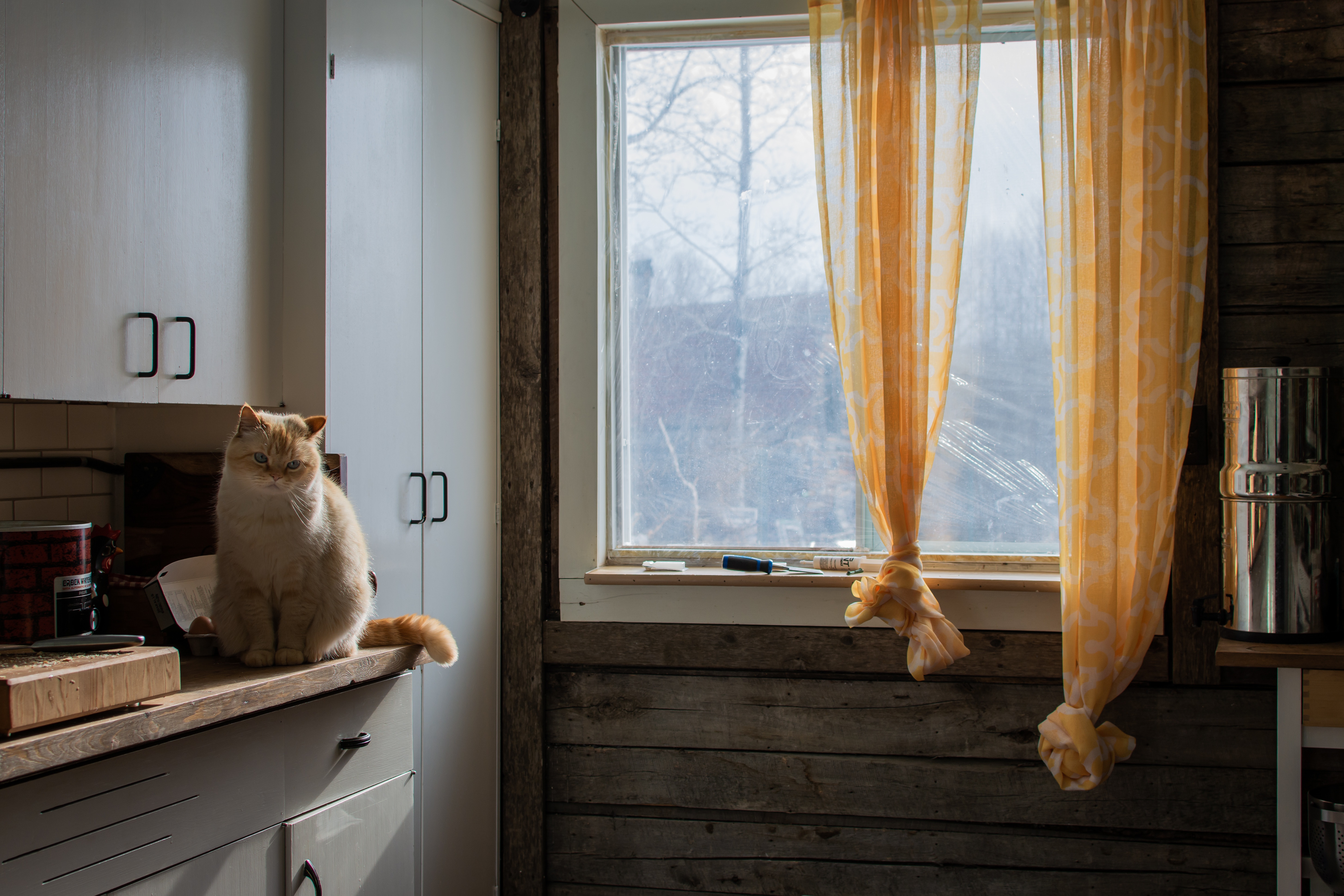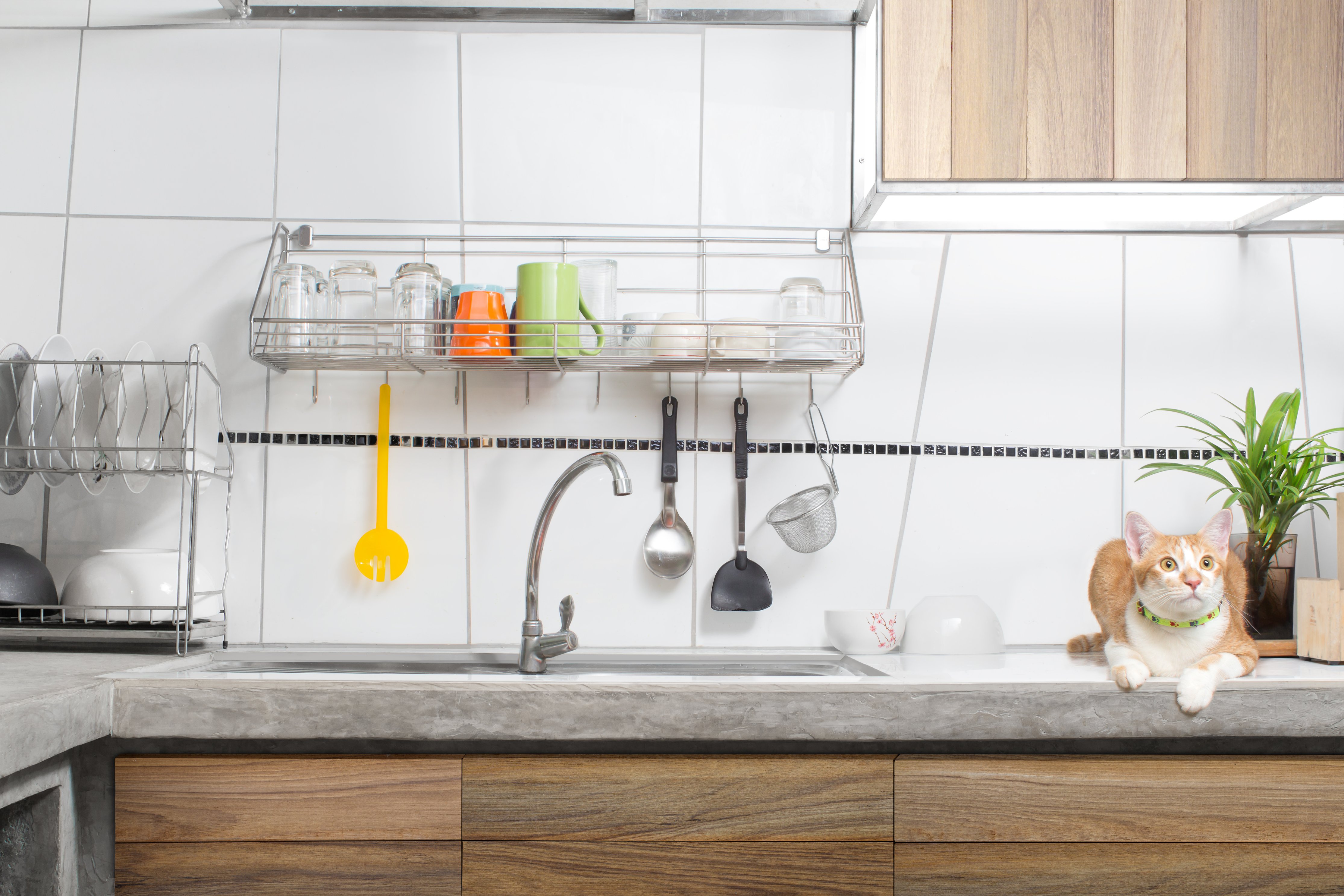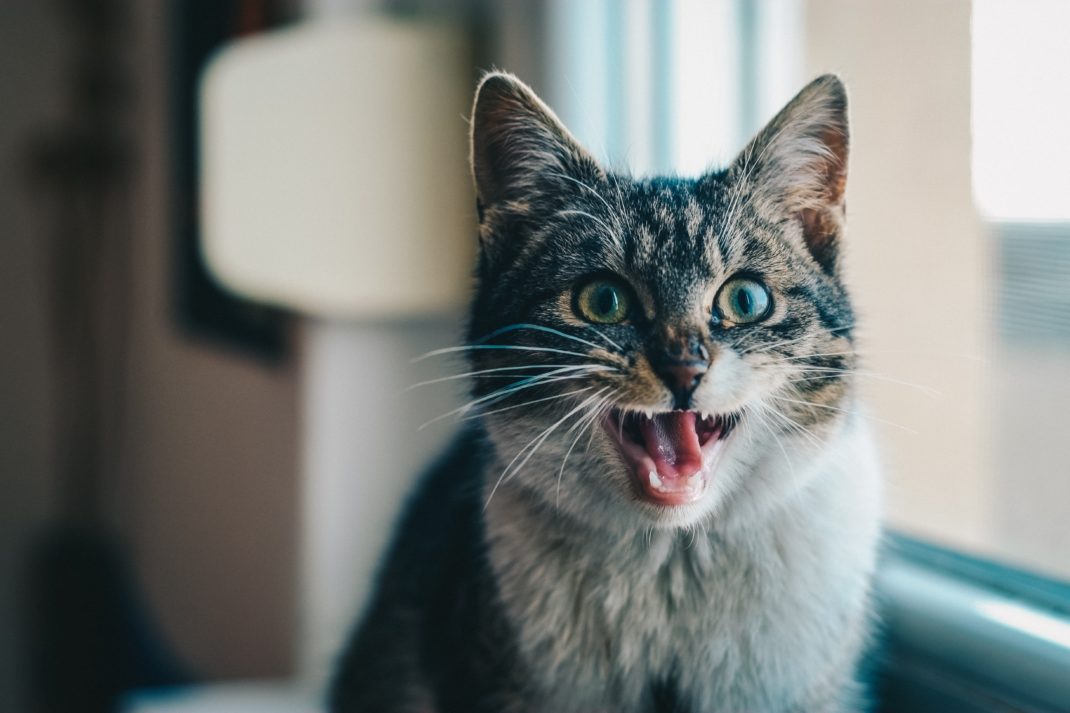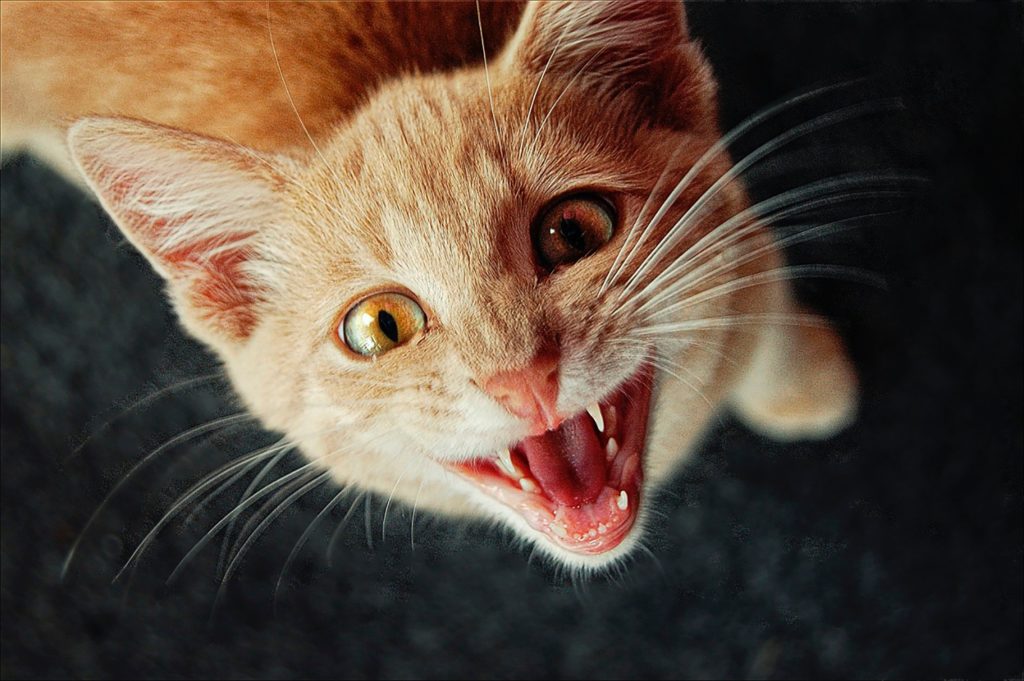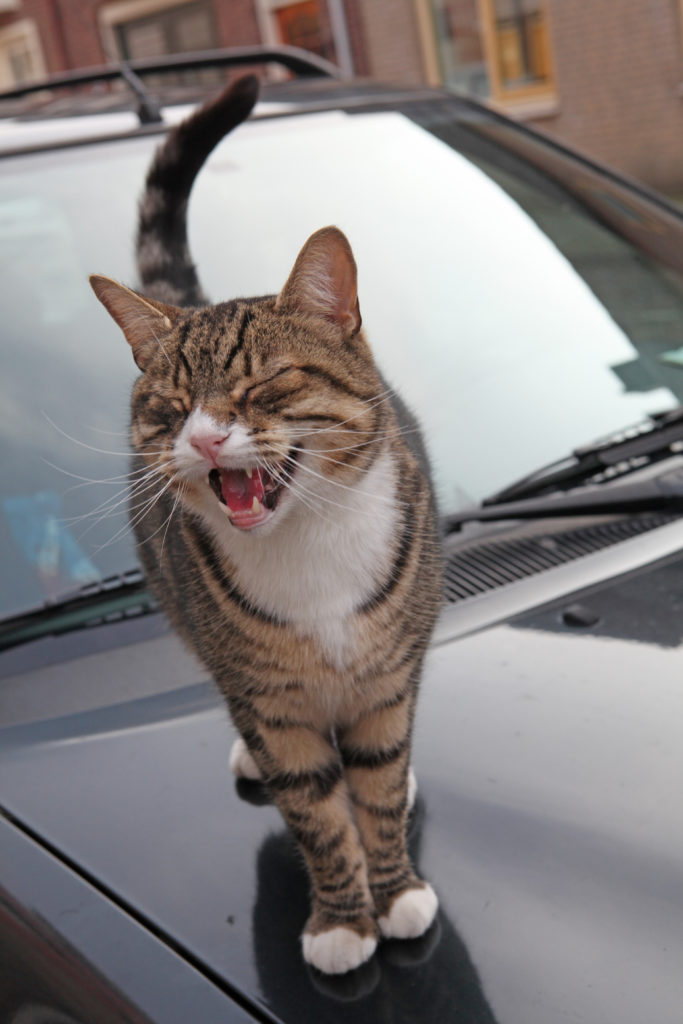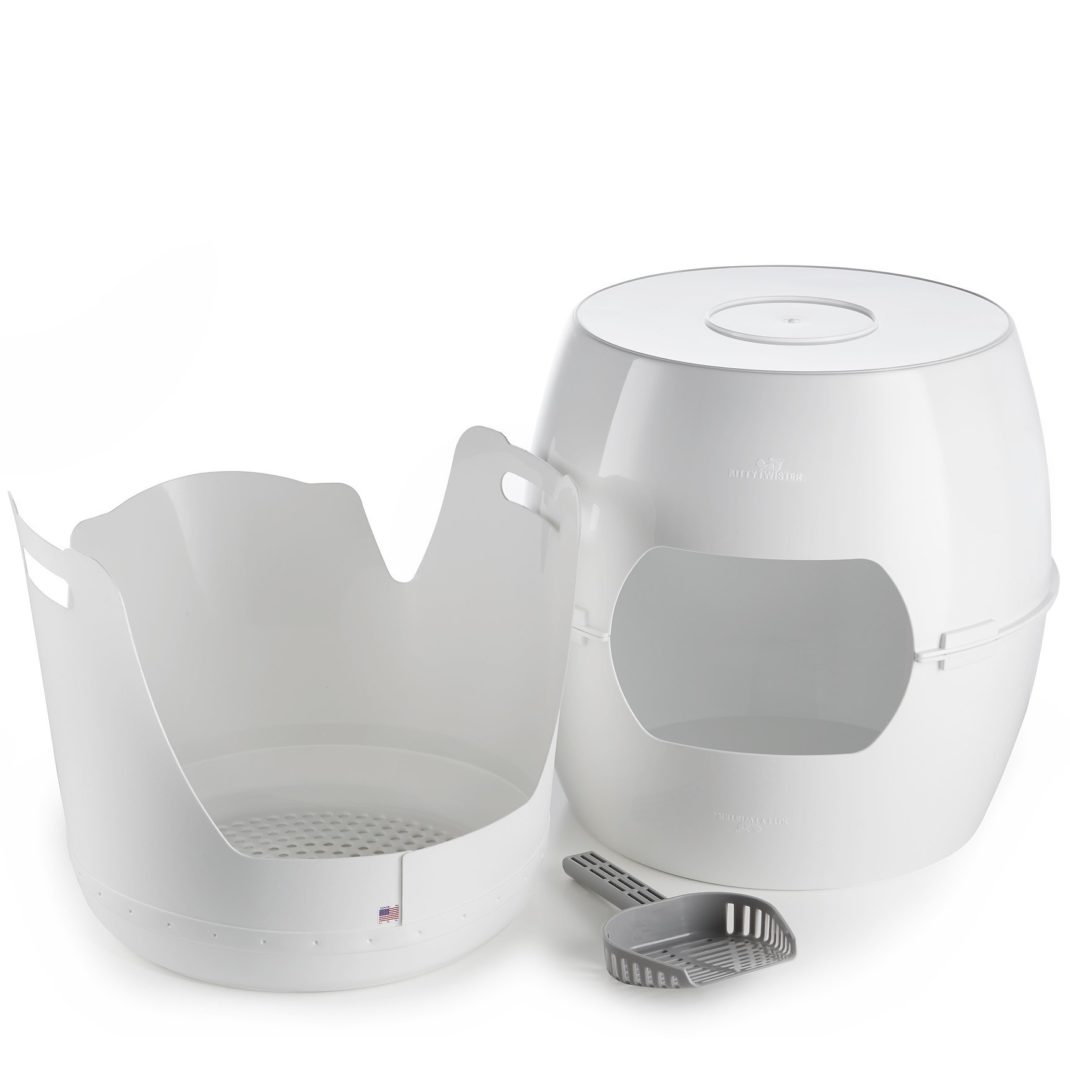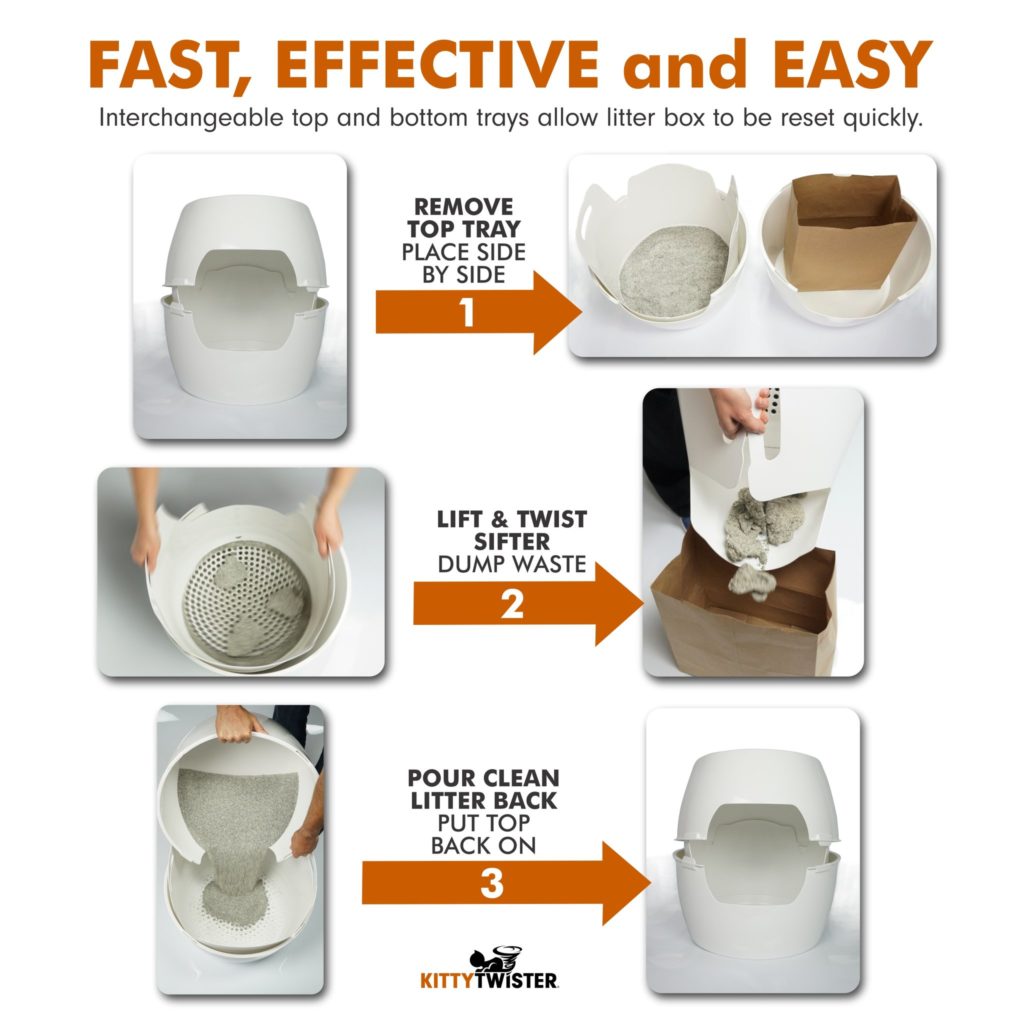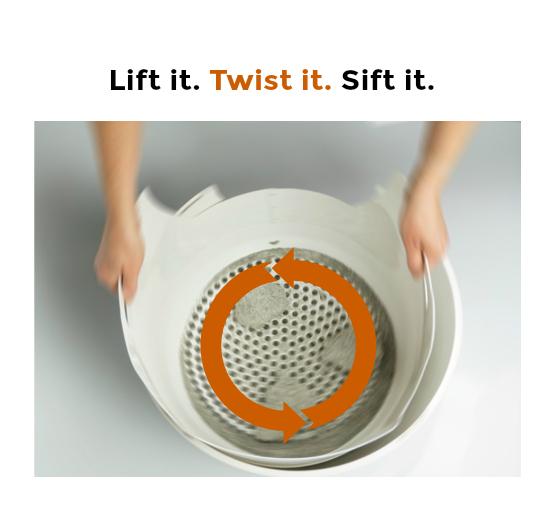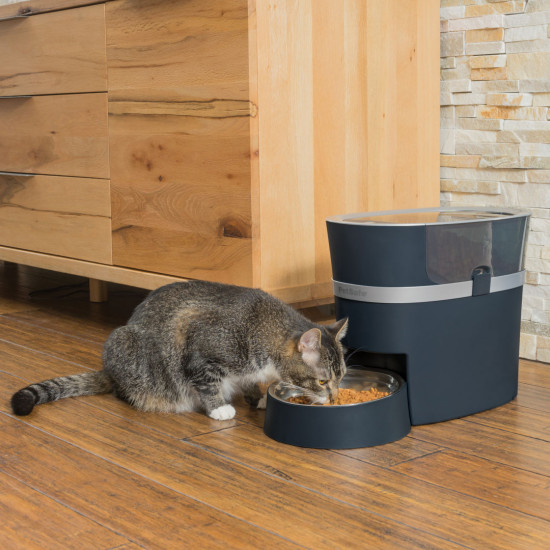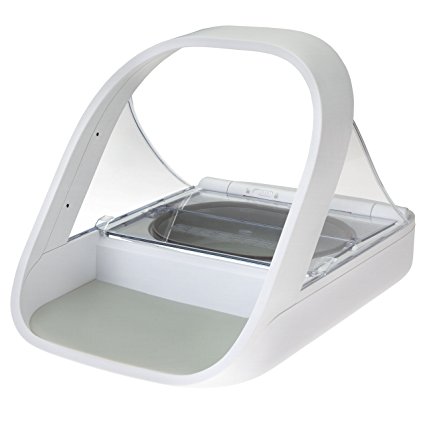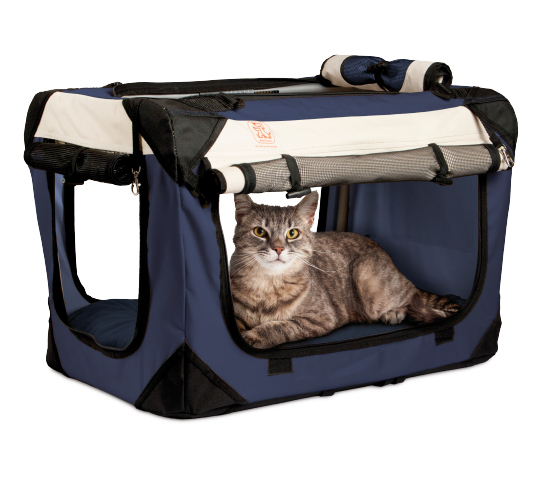Ah, litter boxes. Everyone’s favorite cat accessory.
Picking a litter box that works for your cat is crucial. If your cat likes her litter box, she’s way more likely to use it than than she is to go on your damp towels or in the corner of the basement.
Having a bad litter box can be a nightmare. Difficult cleaning, terrible smells, and general avoidance by your cat can all be caused by a bad litter box.
Whenever you decide what kind of litter box you’re going to go with, it’s important to consider the following factors:
- Size
- Durability
- Shape
- Automatic vs. Traditional
- Covered vs. Uncovered Litter Boxes
Covered vs. Uncovered Litter Boxes
As we’ve discussed in some of our other litter box reviews (CatGenie and KittyTwister), cats typically prefer uncovered litter boxes. Uncovered boxes give your cat the opportunity to look around while she’s using the litter box. This gives her the opportunity to be on the lookout for predators or things that may attack her. While this is more important in the wild than in your laundry room, it’s still important to cats.
Uncovered boxes provide superior ventilation and allow urine clump to dry out better than covered boxes.
That being said, not every entry into the covered litter box market is a total dud. Some of the features that make covered boxes unappealing, including their lack of ventilation and the position of vulnerability it places the cat in while using it, can be remedied by simply shifting from a side entrance to a top entrance.
The litter box we’ll be looking at today is a top-entry covered litter box produced by IRIS products. Behold: The IRIS Top Entry Cat Litter Box!
IRIS Top Entry Cat Litter Box
Specifications
- Materials: BPA Free Plastic
- Exterior Dimensions: 20.47” L x 16.14” W x 14.56” H
- Interior Dimensions:
- Widest Point: 20.0” L x 16.0” W x 14.0” H
- Bottom Narrowest Point: 17.5” L x 13.5” W
- Opening Diameter: 9.5″
- Weight: 5 lbs. (without litter)
- Color Options: (see the table below)
White/Beige | Orange/Brown | Black/Gray |
Black/White | Dark Gray/Gray | Dark Gray/White |
Description
The IRIS Top Entry Cat Litter Box is produced by IRIS USA Inc. Spun off of a Japanese company, IRIS USA Inc. initially entered the North American market in 1994 by offering plastic storage containers. Over time, they naturally expanded into other plastic products, including litter boxes. Which are, essentially, a form of plastic storage container. They produce a number of other pet products as well, including pet food storage containers, carriers, and other litter box models.
Here’s a promotional video that shows a cat exiting the litter box:
Assessment
Design
The IRIS Top Entry Cat Litter Box has an ovular shape. It fits well in a corner of a room, and it has plenty of space for your cat to move around while she is doing her business. Even larger cats will be able to fit through the box opening, which is about 9.5 inches in diameter.
While covered litter boxes tend to be problematic, the IRIS litter box offers advantages over other covered models. The top entrance provides excellent ventilation. Having a top entrance means the box is only partially covered. As a result, urine clumps better in this box than in side-entrance covered boxes.
The design of the IRIS litter box also allows for adult cats the opportunity to observe their surroundings while they are going to the bathroom. The box is short enough that an adult cat can see over the edge of the entrance hole, giving her a 360° view of the nearby area.
The exterior bottom of the IRIS litter box has small rubber feet. These feet keep the box from sliding whenever your cat jumps out.
Two sizes are available for the IRIS litter box: medium and large. While a medium litter box may be suitable for a kitten, that kitten is going to grow up into a full-blown adult cat. Your best bet is to stick with the large model.
One disadvantage of the IRIS litter box is that it may not be a good choice for elderly cats or cats with arthritis. Jumping into the box requires some swiftness, and older cats may not be able to easily enter or exit the box. As a result, they may avoid it altogether, going outside of the box.
Ease of Use
Cleaning the IRIS litter box is pretty comparable to cleaning most uncovered litter boxes. The top of the IRIS litter box detaches, which makes cleaning much easier. The high side walls offer an advantage of containing litter that may drop or scatter while you are scooping.
The IRIS litter box has a rounded shape. This means that you have to use the corner of the flat-edged scoop that comes with the box to dig out any litter clumps that collect along the inside perimeter of the box floor. This cleaning motion is a little awkward.
Given the IRIS litter box’s large size, it ends up holding a lot of litter. This makes the box a bit heavy to maneuver around if you want to dump it out entirely. The high side walls also make it difficult to pour the litter out into a garbage bag.
One huge advantage of the IRIS Top Entry Cat Litter Box is that it dramatically reduces litter scattering. Since the entire litter area is enclosed, any litter your cat kicks up while digging will remain in the box. When your cat exits, he has to walk over the box lid. The lid is grooved and collects any additional litter that may be stuck on your cat’s paws.
The IRIS Top Entry Cat Litter Box will not eliminate all litter tracking, but combined with a litter mat it can significantly reduce the amount of stray litter pieces you find around your house.
Unfortunately, the scoop that is included with the litter box is not great. It may be worth investing in a separate litter scoop if you end up disliking it.
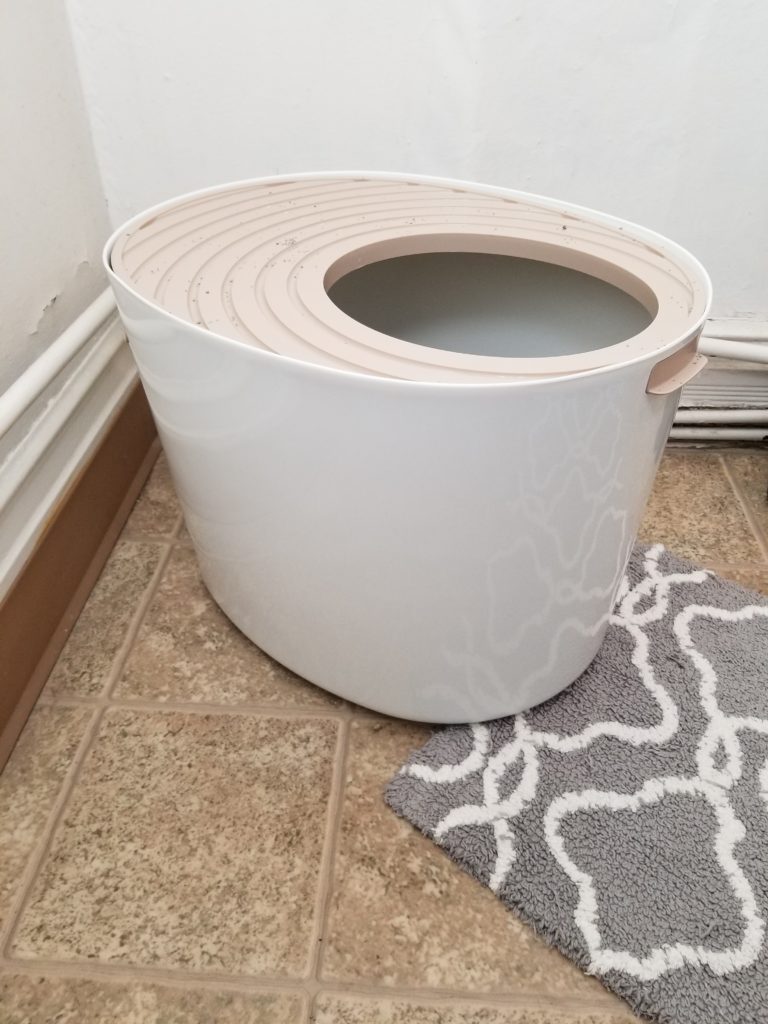
Quality and Durability
Material of construction is important when choosing a litter box. The vast, vast majority of litter boxes are constructed from some form of plastic. Plastic is easy to clean, cheap, and lightweight.
Not all plastic is created equal though. Buying a litter box constructed of cheap, flimsy plastic can end up being a mistake. A poorly constructed box is more likely to break, either during cleaning or after your cat jumps on the side of it a bit too hard.
Fortunately, the IRIS Top Entry Cat Litter Box is constructed of strong, durable plastic. The side walls are flexible, allowing litter to be poured out during cleaning. The lid is strong enough for your cat to walk all over it without fear of collapse.
The bottom of the IRIS litter box is also reinforced to keep it from breaking under the pressure of a couple inches of litter and your cat’s weight.
Value
As of October 2018, the IRIS Top Entry Litter Box costs just under $35. The cost varies a little bit depending on which color you choose. This price is comparable to similar litter boxes offered by Petmate and Nature’s Miracle. It’s also significantly cheaper than similar offerings from Modkat.
Compared to other top entry litter boxes constructed of similar materials, the IRIS litter box delivers a lot of value. It’s durable, cats like it, and it greatly reduces the amount of litter scatter your cat produces.
Pros
- Limits scattering of litter due to kicking while your cat is burying her waste.
- Large entrance hole makes it easy for cats to get in and out.
- Grooves on lid of box help capture pieces of litter from your cat’s paws while she is exiting, further reducing litter scattering.
- Convenient scoop hook for scoop storage.
- Available in multiple colors.
- Open top provides sufficient ventilation, allowing clumps of cat urine to dry.
- Top of box is removable for easy cleaning.
Cons
- Top entrance litter boxes are not great for older cats. Older cats may struggle getting in and out of the top entry. For an older cat, you should choose a litter box with low sides for easy entry.
- Box shape is a little tall for very young kittens.
- Circular shape is difficult to scoop. Cleaning this box is not a fun time.
- Scoop included with litter box is very poor quality.
Final Verdict
Based on our rating system, the IRIS Top Entry Cat Litter Box scores a 9.5 / 10.0. This litter box is compact, which makes it good for small apartments. But it still provides plenty of space for your cat to maneuver around while she’s doing her business. The high walls stop litter from scattering all over the place while your cat buries her waste. Plus the grooved top plate collects any remaining litter that may be stuck to her paws.
Having the opening on the top of the box allows for ample ventilation, and adult cats can see out of it while they’re doing their business. It’s great for young and adult cats. Very small kittens and elderly cats may have a tougher time using it, but the majority of cats will have no problem getting in and out.
Even though we typically don’t recommend covered litter boxes, this one is an exception. Cats enjoy it, and the top entrance helps mitigate a number of the problems associated with covered litter boxes. This covered litter box gets Mr. Catmandu’s stamp of approval. Check it out on Amazon!


